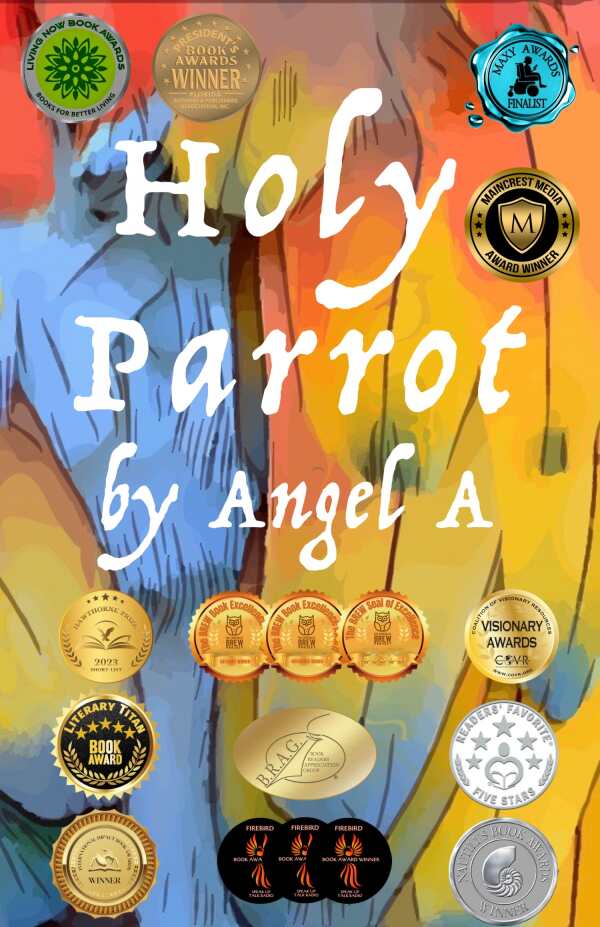Holy Parrot
In the novel Holy Parrot, a researcher meets a troubled girl around whom religious fervor swirls.
In Angel A.’s novel Holy Parrot, a researcher seeks the truth about a pregnant teenager.
Leo is an Australian undergraduate who studies genetics. He’s sent by a pharmaceutical company to a fishing village in Buritaca, Colombia, to learn about its residents’ longevity. While he’s there, he meets Maria, an enchanting sixteen-year-old who says that she is “to be the mother of the new Christ”—Gabriel, a parrot, told her that she was. Maria’s mother is eager to embrace the situation as a miracle, while her father, Gustavo, wants to reap the material benefits of her situation.
Devotees from different world religions gather at Maria’s home. Leo is caught between science and faith and feels a growing sense of protectiveness toward Maria, whose reliability he nonetheless questions. Meanwhile, a village local threatens to disclose the truth. Leo volleys between suspicions about the baby’s paternity and his feelings of empathy toward Maria. Though his research is precise and methodological, he’s working in a place where superstitions tangle with truth. He navigates this mix in measured terms. But as Maria exhibits new and remarkable abilities, including holding a crowd in thrall with religious speeches, he comes to question his own hold on reality.
Leo is a cautious guide, and his serious nature makes these unusual circumstances easier to accept. In fabulistic Buritaca, he encounters elements of a paradise, including a lagoon, and navigates village life in a place dominated by the coffee industry and marked by colorful houses. He also makes note of tourists who are consumed by their phones and social media—spectacles who heighten some elements of the story. And other people—including a Colombian botanist and a mythologist from an American university—share their perspectives and have intriguing conversations.
Though she’s adulated by others, Maria is still a vulnerable teenager whose behavior is often distant. Parallels are drawn between her and the Virgin Mary, though these elements of the narrative are loose, and their embellishments veer toward pantheism and invite self-help truisms. Indeed, Maria’s advice regarding channeling, which prioritizes “workship” over “worship” and emphasizes human agency, strays from the novel’s ostensible center. Among these elements, Leo’s strong voice is the novel’s most consistent feature. Still, he draws some abrupt conclusions about ethics, and his research resolves in a tenuous, too-swift manner.
In the novel Holy Parrot, a researcher meets a troubled girl around whom religious fervor swirls.
Reviewed by
Karen Rigby
Disclosure: This article is not an endorsement, but a review. The publisher of this book provided free copies of the book and paid a small fee to have their book reviewed by a professional reviewer. Foreword Reviews and Clarion Reviews make no guarantee that the publisher will receive a positive review. Foreword Magazine, Inc. is disclosing this in accordance with the Federal Trade Commission’s 16 CFR, Part 255.

